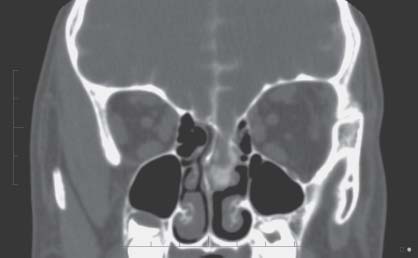Case 69 Spontaneous Cerebrospinal Fistula Fig. 69.1 Computed tomography coronal scan through the anterior fossa and ethmoids, with infusion of metrizamide intrathecal contrast. Fig. 69.2 T2-weighted coronal magnetic resonance image through the anterior cranial fossa.
 Clinical Presentation
Clinical Presentation
 Questions
Questions


 Answers
Answers
< div class='tao-gold-member'>
69 Spontaneous Cerebrospinal Fistula
Only gold members can continue reading. Log In or Register to continue

Full access? Get Clinical Tree


